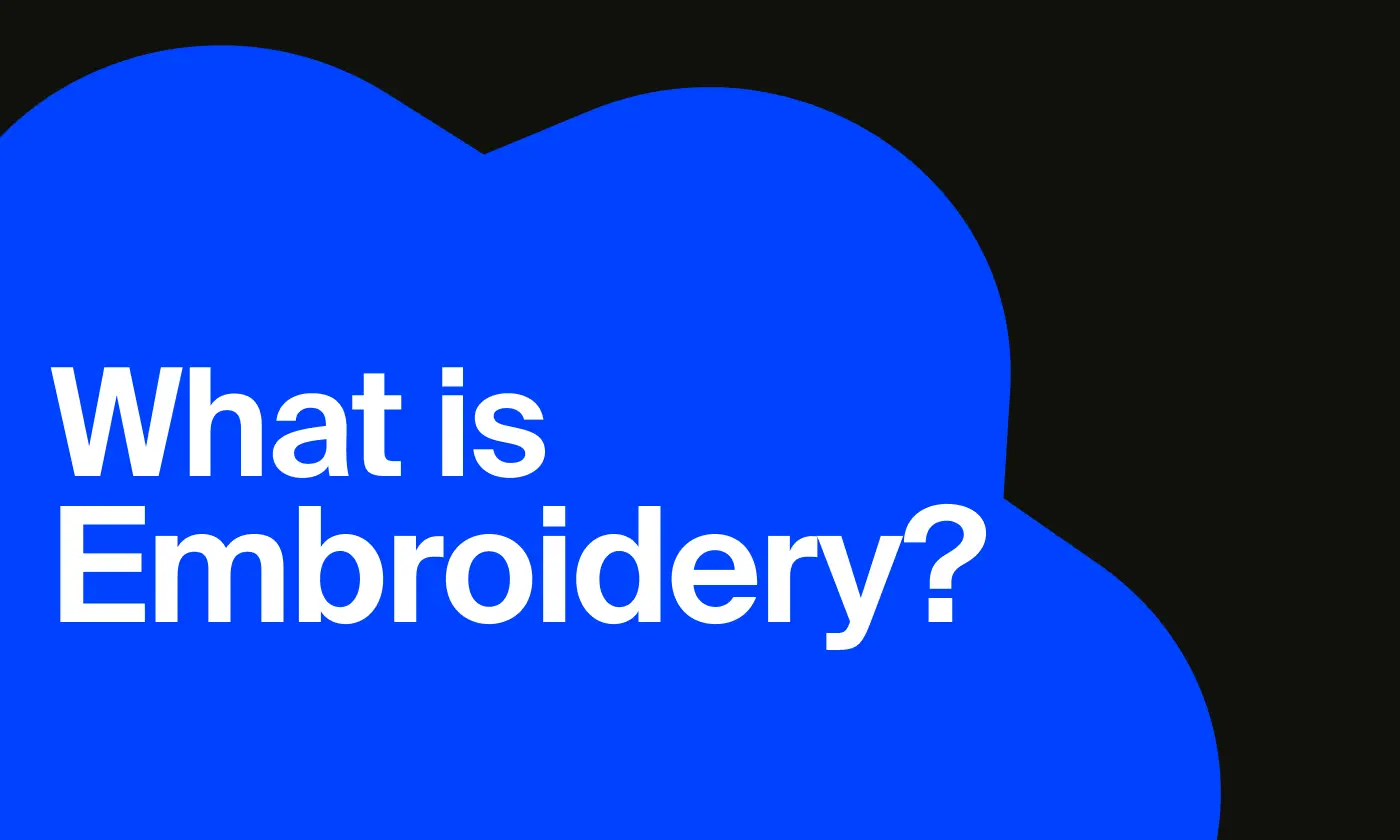What is Embroidery?

Embroidery is the process in which a design is stitched onto fabric as a way to brand a garment or product. Using different colors of threads, an image, word, or shape can be embroidered onto any garment or fabric product. Embroidery is often used on a variety of types of clothing for merchandise, branding, and advertisement.
Benefits of embroidery
Embroidery makes a design or customization look and feel premium on a garment or product. But embroidery has other benefits when compared to other printing or branding forms for garments or other products:
- Long lasting – While other printing forms can be worn away due to repeated wash and wear, embroidery is much sturdier, with colors keeping vibrancy and withstanding many more wash cycles than other printing methods.
- Durability – Threads used for embroidery are thin and flexible, with stitches being tight and close to each other. Because of this, it is unlikely for the stitching to get undone easily, making them resistant to damage and allowing the branding/customization to keep its shape for a long time.
POD vs. MOQ embroidery
Embroidery can be done via two manufacturing methods: print-on-demand and minimum-order-quantity. This allows for flexibility when it comes to up-front inventory costs and risks. You can easily test products utilizing POD embroidery and, at scale, switch to MOQ embroidery. There are some limitations when doing POD embroidery when it comes to size, colors, and print areas vs. MOQ embroidery, which gives you more control over those but requires higher order quantities.
Size of embroidery
The manufacturing method, location/positioning of branding, and the product being customized determine the size options for embroidery. The size of an embroidery is defined by the number of stitches needed to embroider the branding/customization. To put it in perspective, a 1” x 1” square fully embroidered is, on average, 2,000 stitches. Depending on the manufacturing method, you will either have a limited amount of stitches per print area (POD), or you will pay per stitching count with more flexibility in the number of stitches and embroidery patterns for a given customization (MOQ).
Limitations of embroidery
Embroidery has its limitations when compared to other printing methods or branding forms for garments or other products:
- Small details - Small details of a design can prove problematic to embroider. Any designs incorporating small text or dots will be difficult to achieve with accuracy.
- Colors - Gradients and shading are not possible to embroider. Additionally, depending on the manufacturing method (POD vs. MOQ), there are limitations in the number of color threads used per design/customization.
- Large sizes - Because embroidery is priced based on the number of stitches, large designs/customizations become extremely costly to manufacture compared to other printing methods like DTG, screen printing, DTFx, etc.
















